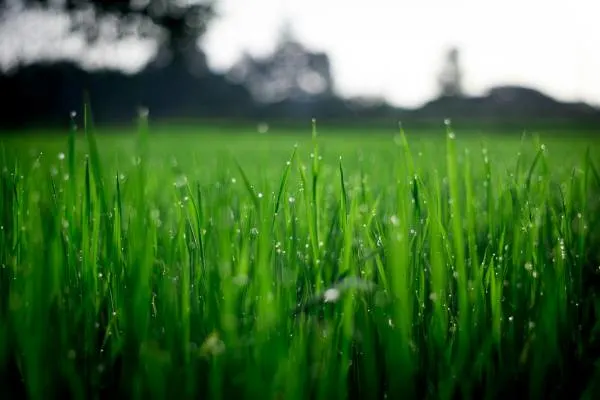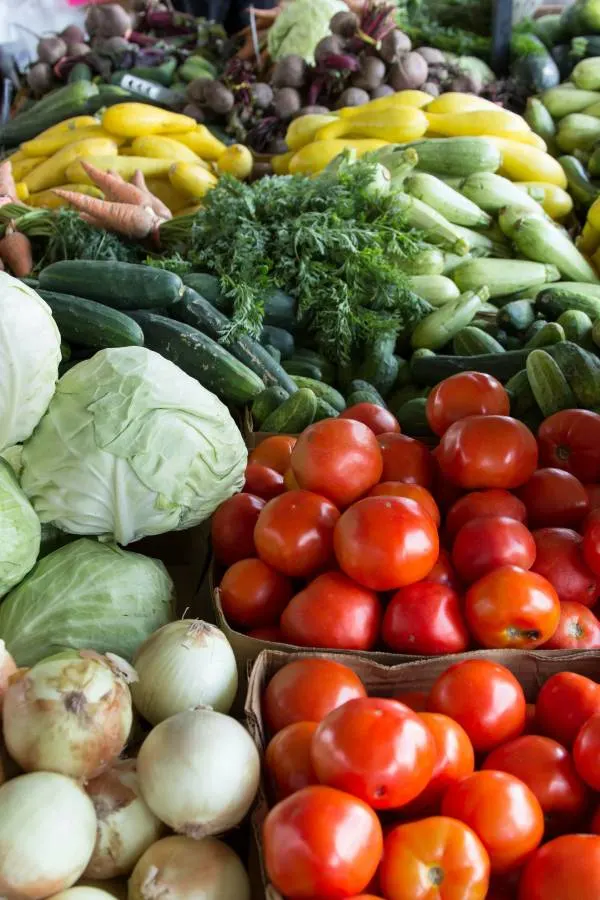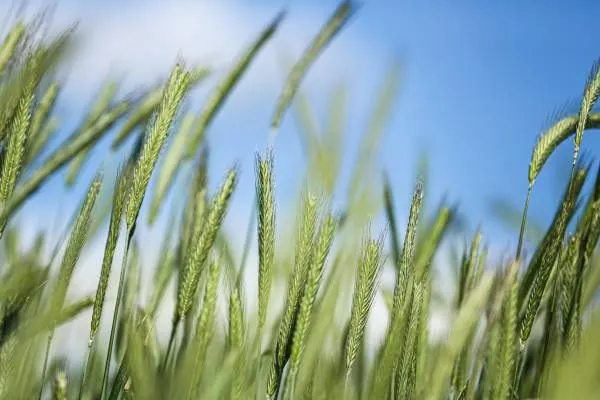Grass is a ubiquitous and interesting plant family that we often overlook.
You can find it everywhere, particularly in your garden, where it plays a crucial role in maintaining the ecosystem. Being an essential vegetation for nature, no garden is complete without the natural charm of grass.
Beyond merely serving as a food source for animals like cows and sheep, an exciting debate persists among enthusiasts and scientists.
Now, what would that be (duh!).
A common question echoes: Is grass a vegetable, or should it be categorized as a plant?
Today, we will discuss some interesting facts and classifications of grass that will help you better understand everything about it.
So, without further ado, let’s begin!

Can Grass Be Considered a Vegetable?
Many individuals deem grass a vegetable.
But is that true?
Let’s look at the botanical and culinary classification of grass for a better understanding.
Botanical Classification of Grass
From the botanical perspective, the grass is classified as a monocotyledonous plant. Therefore, it stands apart from vegetables, which are primarily dicotyledonous. This distinction arises from differences in their shapes, structures, and various characteristics.
So, to put it simply, grass isn’t classified as a vegetable; instead, it is a distinct type of plant.
Grass plays a vital role in the ecosystem.
Its significance extends beyond mere categorization as it actively contributes to:
- Preventing soil erosion
- Generating oxygen through photosynthesis
- Serving as a primary source of food and energy in the food chain
While grazing animals, such as cows, buffaloes, and horses, rely on grass as the primary food source, humans generally do not consume it in its natural form.
As an exception, some individuals eat wheatgrass, which is juiced and consumed for its health benefits.

The Culinary Perspective
Looking beyond the botanical perspective, the classification of grass as a vegetable takes on a totally different meaning in the culinary world.
By the culinary definition, the term “vegetable” doesn’t simply include any plant but is reserved for those parts of the plants that can be consumed as food by humans. This culinary perspective categorizes vegetables based on their flavor, texture, and role in the cuisine.
Vegetables are known for their distinct tastes and are nutritionally suitable for consumption in various forms—cooked, raw, or as an ingredient in many different dishes.
Despite being a type of plant, grass doesn’t align with the common perception of vegetables as an edible part of plants with diversified flavors.
Thus, grass cannot be considered a vegetable from a culinary standpoint.
However, exceptions exist!
Certain types of grass, like bamboo shoots and wheatgrass, are considered vegetables in specific cuisines.

Arguments for Grass Being a Vegetable
While grass is not a traditional vegetable like broccoli or carrots, some argue that grass can offer certain nutritional benefits.
- Firstly, grass contains fiber essential for a healthy digestive system. Like other vegetables, grass can contribute to better digestion and help prevent constipation.
- Secondly, some types of grass, like wheatgrass, are rich in vitamins and minerals. These include vitamins A and K and essential minerals like iron and magnesium. These nutrients help in improving our vision and bone health.
- Additionally, grass is often considered a source of chlorophyll, the green pigment responsible for photosynthesis in plants. Proponents argue that chlorophyll may have antioxidant properties, helping to combat oxidative stress in the body.
While grass may provide certain nutrients, it’s not a comprehensive substitute for other vegetables that offer a wider range of essential vitamins and minerals.

Why Is Grass Misconcepted with Vegetables?
The confusion surrounding grass and vegetables has given rise to several misconceptions.
One prevalent belief is that because grass is green and leafy, it falls under the vegetable category. However, this oversimplification neglects the complicated botanical differences between grass and actual vegetables.
Another misconception arises from the occasional consumption of certain grass varieties, leading some to assume that all grass is, by default, a vegetable.
To clear the air, exposing myths about grass being a vegetable is essential.
While there are instances of specific grass types being consumed for nutritional benefits, the broader category of grass does not align with the botanical and culinary characteristics of vegetables.
Can Grass Be Considered a Vegetable for Animals?
Animals, such as cows and horses, heavily rely on grass because their stomachs are uniquely designed to allow them to extract nutrients from grass and other fibrous plant material effectively.
To these creatures, grass is like a delicious salad packed with essential nutrients.
However, our human digestive system works differently. The plant fibers present in the grass can pose a challenge for our stomachs, and thus, we don’t classify grass as a vegetable.
While animals happily graze on grass to meet their nutritional needs, humans opt for softer vegetables that our digestive systems can process more efficiently. It’s comparable to how certain foods are a hit with specific animals but might not be as appetizing or digestible for us.
This difference in digestion categorizes grass as a vegetable for animals and simply as grass for us.
Is Grass Safe for Human Consumption?
While consuming large quantities of grass is not advisable, small amounts of certain types can be acceptable.
However, it is crucial to ensure the grass is clean and free from harmful chemicals such as pesticides or herbicides before consumption.
Comprising primarily of fiber and water, grass offers only a limited supply of vitamins and minerals. It may contain pollutants, pesticides, or other harmful substances if grown in contaminated soil or treated with chemicals.
While consuming a small amount of grass isn’t usually risky for humans, it’s essential to refrain from making it a regular practice. The reason is that grass lacks fundamental nutrient value for humans, and excessive consumption may upset your stomach or lead to other health problems.
That’s all.
Now, it’s time to move toward the conclusion.
Conclusion
Even though grass is a vital part of nature, it’s not considered a vegetable for humans.
From a scientific perspective, it’s classified as a monocotyledonous plant, while vegetables are dicotyledonous. In the culinary world, vegetables are parts of plants that we eat, known for diverse flavors and provide nutritional benefits.
While grass contains some nutrients, it’s not a complete substitute for traditional vegetables except for specific types like bamboo shoots and wheatgrass that are used in particular cuisines.
The misconceptions of grass being a vegetable arise from its green appearance and occasional consumption.
I hope this post adds some value to your life.
If you find this post knowledgeable, don’t forget to share it with others.
Regards,
Moiz Atiq.
